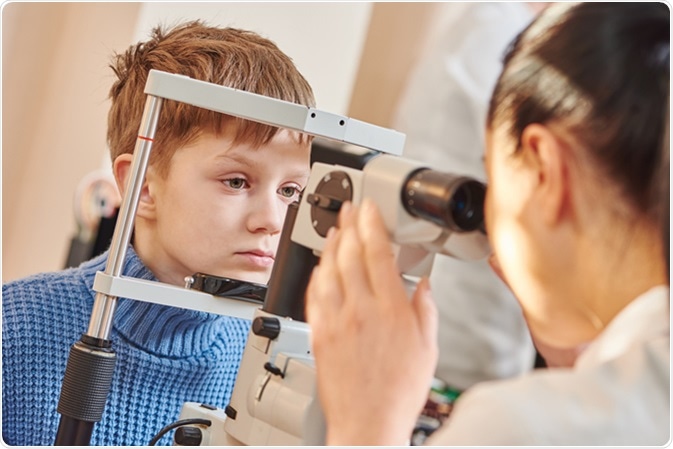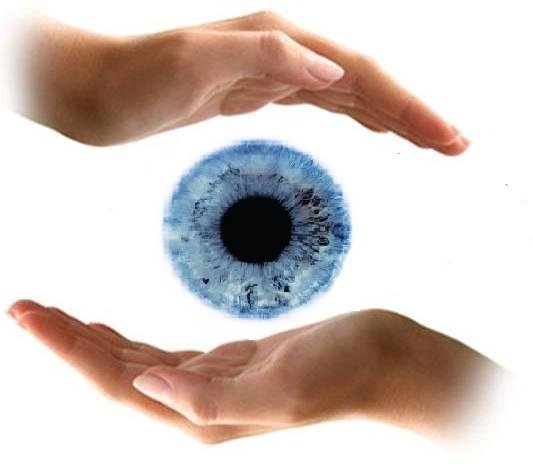Exploring the State-of-the-Art Technologies Made Use Of for Identifying and Treating Eye Conditions
In the realm of ophthalmology, the development of modern technology has substantially boosted the tools offered for detecting and dealing with various eye conditions. From innovative imaging modern technologies that provide in-depth understandings right into eye structures to robotic-assisted surgical procedures that use unmatched precision, the landscape of eye care is continuously progressing.

Advanced Imaging Technologies
Advanced Imaging Technologies have actually transformed the field of ophthalmology by giving accurate and in-depth visualization of the eye frameworks. This non-invasive method aids in the early discovery and tracking of numerous eye conditions such as macular degeneration, diabetic retinopathy, and glaucoma.
Moreover, Fundus Digital photography is another important tool in sensory imaging. This strategy entails recording detailed photos of the back of the eye, including the retina and optic disc. Fundus Photography helps in documenting the progression of eye illness, examining therapy effectiveness, and informing individuals concerning their eye wellness.

Robotic-Assisted Surgical Procedures
Robotic-assisted surgical procedures have substantially advanced the abilities of sensory surgical procedure, introducing a brand-new age of accuracy and effectiveness in treating different eye conditions. By integrating robotic technology into operations, eye doctors can accomplish unequaled precision and control, causing enhanced client results.
One of the primary advantages of robotic-assisted surgical procedure in ophthalmology is the improved dexterity and stability it offers to doctors. The robot arms can do accurate movements with a high level of precision, permitting delicate treatments with very little invasiveness. This level of accuracy is specifically useful in surgical treatments involving the retina, where also minor errors can have substantial ramifications for a patient's vision.
In addition, robotic-assisted medical systems offer real-time imaging and feedback to the specialist, enabling them to make enlightened choices during the treatment. This technology boosts the specialist's situational awareness and permits modifications to be made without delay, making sure optimal outcomes for the patient.
Expert System in Diagnostics
With the evolution of sophisticated innovations boosting surgical accuracy in ophthalmic treatments, the integration of Artificial Knowledge in diagnostics has actually emerged as a crucial advancement changing the field of eye treatment. Expert System (AI) formulas are being increasingly used to assess complicated information from imaging technologies like optical coherence tomography (OCT) and fundus digital photography to assist in the very early discovery and precise diagnosis of various eye conditions. These AI systems can efficiently determine patterns and abnormalities in pictures that may not be noticeable to the human eye, enabling quicker medical diagnosis and therapy preparation.
AI formulas can additionally forecast disease progression, recommend customized treatment plans, and examine the efficiency of treatments. By enhancing the analysis procedure, AI not just improves the effectiveness of eye treatment experts however likewise enhances client results by enabling timely interventions. As AI remains to advance, its duty in diagnostics is anticipated to increase, using new possibilities for early treatment and tailored therapy in the area of ophthalmology.
Gene Therapy Innovations
In the world of sensory developments, recent strides in genetics treatment developments have sparked substantial rate of interest among scientists and medical care experts alike. Gene treatment holds enormous guarantee in revolutionizing the therapy of different eye conditions by targeting the hidden genetic reasons. By presenting genetic product into cells to compensate for irregular genes or to provide an absent gene, genetics therapy supplies an individualized method to addressing acquired eye disorders such as retinitis pigmentosa, Leber genetic amaurosis, and others that were previously taken into consideration untreatable.

As study in genetics therapy proceeds to check it out development, the capacity for tailored therapies for a larger series of eye problems grows, offering brand-new hope for people with hereditary eye diseases.
Digital Truth Rehabilitation
Digital reality recovery has arised as an innovative method in boosting the healing and rehabilitation procedures for individuals with different visual disabilities. refractive surgeries in al. By simulating real-world atmospheres through immersive innovation, virtual truth supplies a special system for vision therapy and recovery. This innovative technique makes it possible for individuals to take part in interactive exercises and activities made to improve aesthetic skill, depth understanding, eye control, and overall aesthetic performance
One key benefit of digital reality rehab is its capacity to customize treatment programs based upon the details needs and capabilities of each person. Through real-time comments and tracking, medical care professionals can track development, change treatments, and provide customized care to enhance end results. Additionally, virtual truth innovation can produce a controlled and safe space for individuals to practice visual tasks, get rid of obstacles, and construct self-confidence in a virtual setting before transitioning to real-world scenarios.
Conclusion
In conclusion, the developments in imaging innovations, robotic-assisted surgical treatments, expert system diagnostics, genetics treatment developments, and virtual fact rehabilitation have significantly improved the diagnosis and therapy of eye problems. hearing service near me. These cutting edge technologies have revolutionized the area of ophthalmology, enabling even more efficient and exact treatments. As technology continues to develop, the future of eye care looks encouraging with the possibility for much refractive surgeries in al more innovative solutions to boost individual results
In the realm of ophthalmology, the advancement of modern technology has considerably boosted the devices available for detecting and dealing with various eye problems. Fundus Digital photography assists in recording the progression of eye diseases, reviewing treatment efficacy, and enlightening clients about their eye health and wellness.
Synthetic Knowledge (AI) algorithms are being significantly used to analyze complicated data from imaging innovations like optical coherence tomography (OCT) and fundus digital photography to assist in the very early detection and precise medical diagnosis of different eye problems.In final thought, the innovations in imaging innovations, robotic-assisted surgeries, man-made knowledge diagnostics, gene treatment innovations, and online fact rehab have actually significantly enhanced the medical diagnosis look at here and treatment of eye problems. As modern technology continues to progress, the future of eye treatment looks promising with the capacity for also more innovative options to boost patient results.